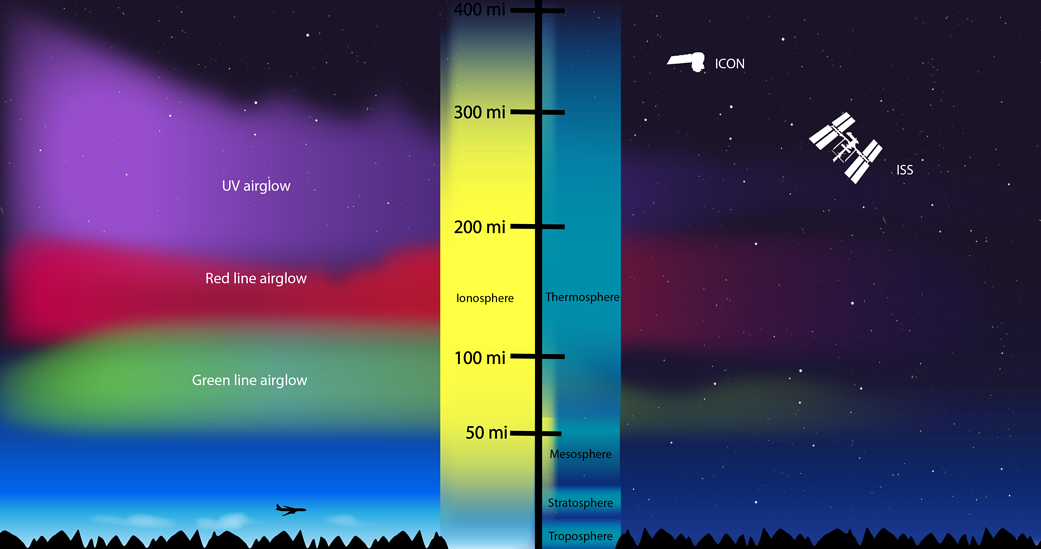NASA’s ICON mission will orbit above the upper atmosphere, through the bottom edge of near-Earth space. From this vantage point, ICON will be able to observe both the upper atmosphere — made of neutral particles — and a layer of charged particles called the ionosphere, which extends from about 50 to 360 miles above the surface of Earth. Processes in the ionosphere also create bright swaths of color in the sky, known as airglow. ICON will observe how interactions between terrestrial weather and the ionosphere create such shimmering airglow as well as other changes in the space environment.
Credit: NASA’s Goddard Space Flight Center/ICON






























